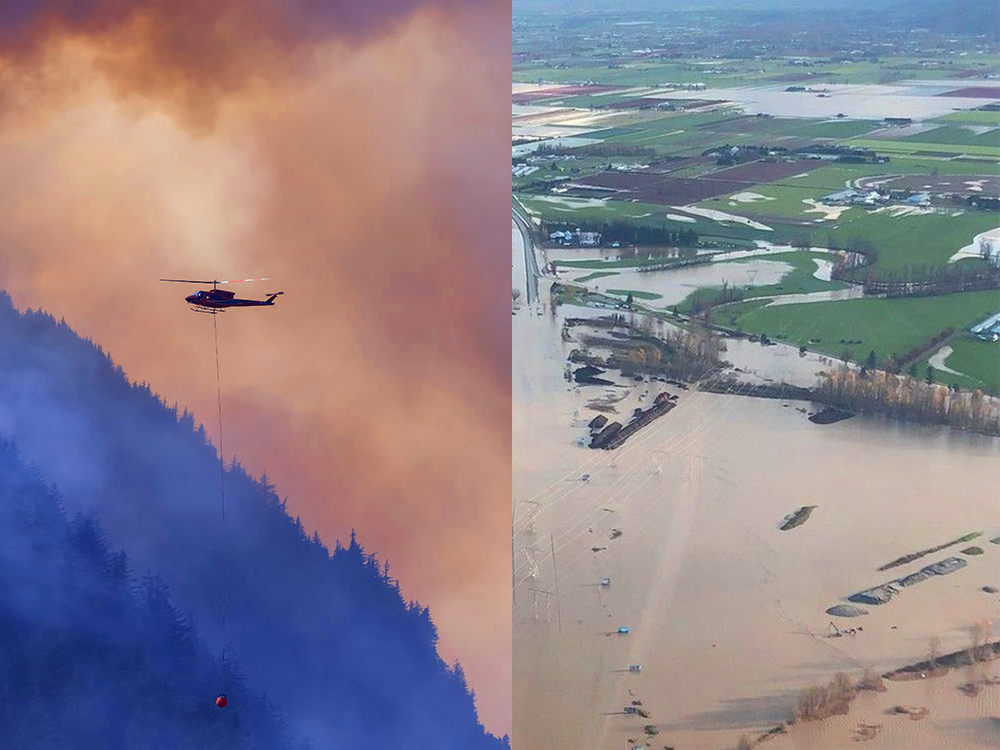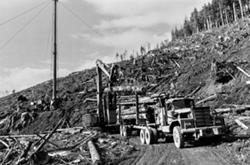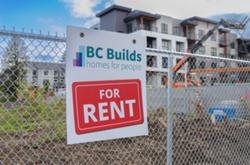B.C.’s hot, dry summer could be setting the province up for a catastrophic flooding event similar to the one that occurred during the atmospheric rivers in November 2021, provincial officials said Wednesday.
The comments came during an update on current wildfire and drought conditions. Bowinn Ma, minister of emergency management and climate readiness, said weather in the weeks and months ahead will determine the potential for fall flooding and whether drought conditions continue into next year.
“I want to emphasize how significant the drought that British Columbia is facing is,” Ma said. “It is unlike any kind of drought conditions the province has ever faced and, in my opinion, truly is a sleeping giant of a natural disaster.”
The province has seen sustained higher-than-average temperatures and low rainfall this year, leading to B.C.’s worst wildfire season on record. Since April 1, more than 2,000 wildfires across the province have burned 2.2 million hectares, Ma said.
She called the numbers “astronomical” and said the full extent of the damage is not yet known.
“What we’re seeing right now are the consequences, the very real impacts, of climate change,” Ma said. “As a province, we’re used to having plentiful access to beautiful clean water and we have not necessarily developed, as a province, the conservation mentality that we will now need to develop.”
Ma compared the current conditions to two years ago, when a heat dome settled over the province in June, causing record-high temperatures and hundreds of heat-related deaths in the Lower Mainland. On June 30, 2021, a wildfire tore through the town of Lytton, destroying 90 per cent of the community and killing two residents.
In 2021, the extreme heat “kickstarted” a period of dry conditions, according to Jonathan Boyd, a hydrologist with B.C.’s River Forecast Centre. More severe drought was avoided when a series of atmospheric rivers moved through the region that fall, he said.
On Nov. 14 and 15, 2021, heavy rainfall caused widespread flooding coupled with deadly landslides in the Lower Mainland. B.C. declared a month-long state of emergency on Nov. 17.
Whether B.C. could experience similar conditions this fall depends on weather in the weeks and months ahead.
While Boyd said it’s difficult to forecast beyond 10 to 12 days, the hydrologist added that B.C. is moving into an El Niño winter, a weather pattern associated with warmer temperatures and potentially wetter conditions.
If El Niño does bring higher-than-average rainfall, it could spell disaster in areas impacted by this summer’s wildfires, he said.
“If we do have heavy rainfall in an area that was recently burned, there is potential for more rapid runoff,” Boyd said. “It can flip like a switch.”
Ma described the best-case scenario as “gradual rain over long periods of time” to replenish reservoirs. While too much rain too quickly could cause the catastrophic flooding seen in 2021, too little could extend the drought into the new year.
“Not too fast so as to trigger floods or landslides but not so slow that we miss the opportunity to recharge our ecosystems before the freeze comes in,” she said, adding that once the ground freezes, it will no longer absorb water. “Whether we start 2024 in drought conditions will be determined by the amount of water that the ground has absorbed by the time it freezes for the winter.”
That time is fast approaching in the north, Boyd added, where the ground could freeze in a little over a month.
“We can start to get into freeze-up in mid-October to early November for those areas,” he said. “The reality is that they also don’t typically get that much precipitation in the months ahead.”
It makes it likely that some areas of the province will carry drought conditions into the new year, he added.
And while moderate, ongoing precipitation spread over a wide area is ideal, Boyd added that those conditions are rare. “Usually, rain falls from specific storm events that occur in relatively short periods of time,” he said.
B.C.’s drought conditions began early this year, causing the tinder-dry conditions that led to destructive wildfires in all parts of the province. The season began in the northeast in May, where the Donnie Creek wildfire quickly grew to become the largest in the province’s history. Located 150 kilometres north of Fort St. John, it is now estimated at nearly 6,000 square kilometres.
At the time, provincial authorities warned that risk of wildfires was expected to move south. In July, continued dry conditions combined with a series of lightning storms brought dozens of new wildfires to north-central B.C. The province announced on July 18 that Canadian military resources, in addition to firefighting teams from Mexico, New Zealand, Australia and the U.S., were being sent to areas around Burns Lake and Vanderhoof.
By mid-August, destructive wildfires were appearing in the province’s south. Wildfires in the Okanagan and Shuswap have destroyed hundreds of homes and displaced nearly 30,000 people.
As crews continue to work to contain fires in the south, Cliff Chapman, wildfire operations director with BC Wildfire Service, said this week that “very significant winds” have caused fires in the north to flare up, with wildfires in the northwest and Prince George areas taking significant runs over the past week.
As the days shorten, it’s hoped that cooler temperatures and higher humidity will assist firefighting efforts, he said. But the province isn’t out of the woods yet, as potential remains for another high-pressure system in the weeks ahead.
On Wednesday, about 3,800 people remained under evacuation order in B.C. and 34,000 more were under evacuation alert. Ma said the province is “trending in a positive direction” as some evacuation orders are downgraded to alerts and alerts affecting 30,000 people were rescinded in recent days.
As B.C. moves toward the conclusion of peak wildfire season, more than 400 wildfires still burn, almost half of them out of control, she said, adding that the province is “in the home stretch but not yet in the clear.” ![]()
Read more: BC Politics, Environment
















Tyee Commenting Guidelines
Comments that violate guidelines risk being deleted, and violations may result in a temporary or permanent user ban. Maintain the spirit of good conversation to stay in the discussion and be patient with moderators. Comments are reviewed regularly but not in real time.
Do:
Do not: